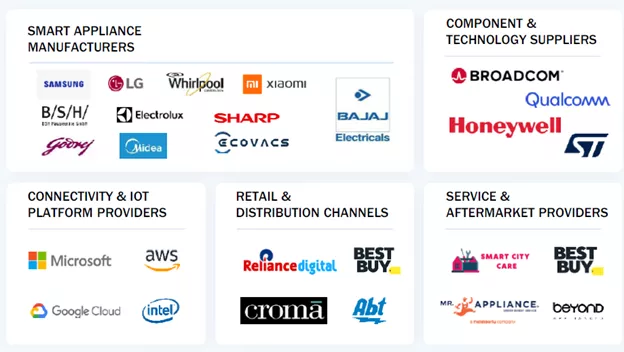The organic electronics market is projected to grow from USD 59.9 billion in 2023 to USD 142.1 billion by 2028, registering a CAGR of 18.9% during the forecast period according to a new report by MarketsandMarkets™. The growth of the organic electronics market is driven by various factors, including technological advancements, rising demand for flexible and lightweight devices, increasing adoption of OLED display panels, emerging end user such as automobile and healthcare, and cost-effectiveness. These factors collectively contribute to the expanding market opportunities for organic electronic devices, fostering innovation and driving the adoption of this technology in diverse industries.
Download PDF Brochure:
https://www.marketsandmarkets.com/pdfdownloadNew.asp?id=144113962
Browse in-depth TOC on "Organic Electronics Market"
120 – Tables
60 – Figures
240 – Pages
By material, the conductive material holds the second-largest market share during the forecast period
Conductive materials play a crucial role in a variety of organic electronic devices, including touch screens and RFID (Radio Frequency Identification) tags. These devices rely on the conductivity of materials to enable their functionality and performance. In touch screens, conductive materials are used in the construction of transparent electrodes that allow for accurate touch sensing. Indium tin oxide (ITO) has traditionally been used as a conductive material in touch screens. However, organic conductive materials, such as conductive polymers and carbon nanotubes, are gaining attention due to their flexibility and potential for lower manufacturing costs. RFID tags also utilize conductive materials to enable wireless communication and data transfer. Conductive inks or conductive polymers are often employed to create the antennas and circuits necessary for RFID functionality. These materials enable the transmission and reception of radio signals, allowing for identification and tracking in various applications, including supply chain management, inventory control, and access control systems.
The consumer electronics segment is likely to account for the largest market share between 2023 and 2028.
Consumer electronics is the largest market for organic electronics. This is primarily because organic electronic components and devices, such as OLED displays and organic photovoltaic cells, have found widespread use in a variety of consumer electronic products. Smartphones are one of the key drivers of the organic electronics industry in the consumer electronics sector. OLED displays, in particular, have gained significant popularity in smartphones due to their superior image quality, energy efficiency, and thin form factor. Major smartphone manufacturers have adopted OLED displays in their flagship devices, driving the demand for organic electronic components. Televisions are another significant application area for organic electronics in the consumer electronics market. OLED technology has revolutionized the television industry, offering exceptional picture quality, wide viewing angles, and slim designs. OLED TVs have gained recognition for their ability to produce deep blacks, vibrant colors, and high contrast ratios. Laptops and tablets also incorporate organic electronic components, such as OLED displays and organic photovoltaic cells. Organic electronics devices' lightweight and energy-efficient nature makes them attractive for portable computing devices.
The consumer electronics market continues to drive the demand and adoption of organic electronics due to the increasing consumer preference for devices with superior display quality, energy efficiency, and innovative designs. As technology advancements continue to enhance the performance and cost-effectiveness of organic electronic components, their usage in consumer electronics is expected to expand further in the coming years.
Inquiry Before Buying:
https://www.marketsandmarkets.com/Enquiry_Before_BuyingNew.asp?id=144113962
North America is likely to account second-largest market share in the global organic electronics market during the forecast period.
During the forecast period, North America is expected to hold the second-largest market share in the organic electronics market. This can be attributed to several factors contributing to the region's growth and market presence. Firstly, North America is home to a significant number of established technology companies, research institutions, and innovative startups. These entities drive the development and commercialization of organic electronic technologies, contributing to the region's market share. Secondly, North America's technologically advanced consumer electronics industry fuels the demand for organic electronic devices. The region is a significant market for smartphones, tablets, laptops, and other consumer electronic products, where the adoption of organic electronic components, such as OLED displays, is on the rise. Thirdly, government initiatives and investments in research and development further support North America's organic electronics market growth. Funding for academic research, collaborations between industry and academia, and supportive policies contribute to advancing and commercializing organic electronic technologies.
Moreover, North America strongly focuses on sustainability and energy efficiency, driving the adoption of organic electronic devices that offer these benefits. The region's emphasis on eco-friendly technologies and the growing demand for renewable energy solutions, such as organic photovoltaics, also support the market expansion.
Key Players
Merck KGaA (Germany), BASF SE (Germany), Covestro (Germany), DuPont (US), AUO Corporation (Taiwan), Sony Corporation (Japan), Samsung Display (South Korea), LG Display Co., Ltd. (South Korea), Sumitomo Chemical Co., Ltd. (Japan), Universal Display Corporation (US), Konica Minolta, Inc. (Japan), and Novaled GmbH (Germany) are the dominant companies in the organic electronics companies.

No comments:
Post a Comment